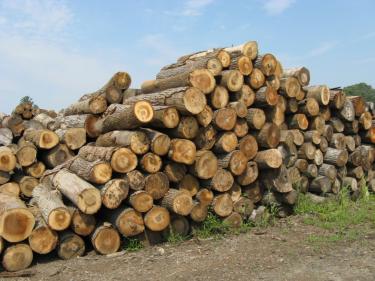Commercial Thinning
In pre-commercial and commercial thinning alike, the decisions you have to make are much the same. You must still define your goals and priorities for your woods, and figure out which “keeper” trees will help you reach your objectives. You are still in charge.
The difference is in the value of your unwanted trees. If the trees you want to remove have value in a local market, you stand to gain financially from your thinning. Your unwanted trees may have value as:
- Biomass, which is woody material—chips, leaves, and small branches—that can be used for electricity and fuel.
- Pulpwood and firewood, if the trees are smaller or lower quality but still marketable.
- Sawtimber, if they are large, straight and free of defects.
If you are considering a commercial thinning, you will most likely not conduct the thinning yourself. Because of the size of the trees involved and the need to preserve the value of the timber, you may prefer to hire a contractor to thin for you. Your consulting forester may have recommendations, or you can ask nearby landowners for advice.
Make sure to sort out the work schedule, insurance and liability issues, payment, and timber sale contract details as you would for any timber harvest.
How can I get more tips?
It’s simple! Enter your email below.

